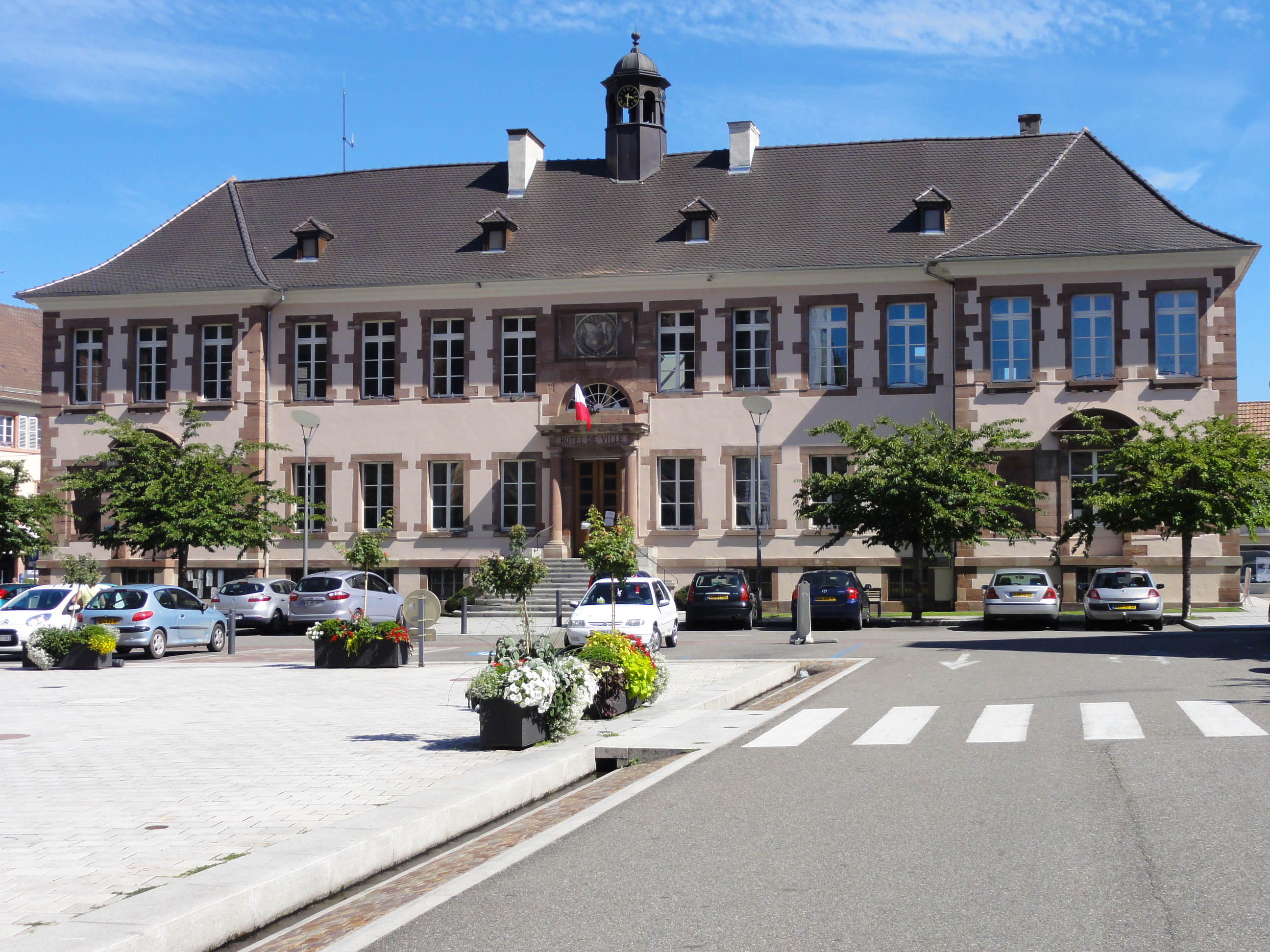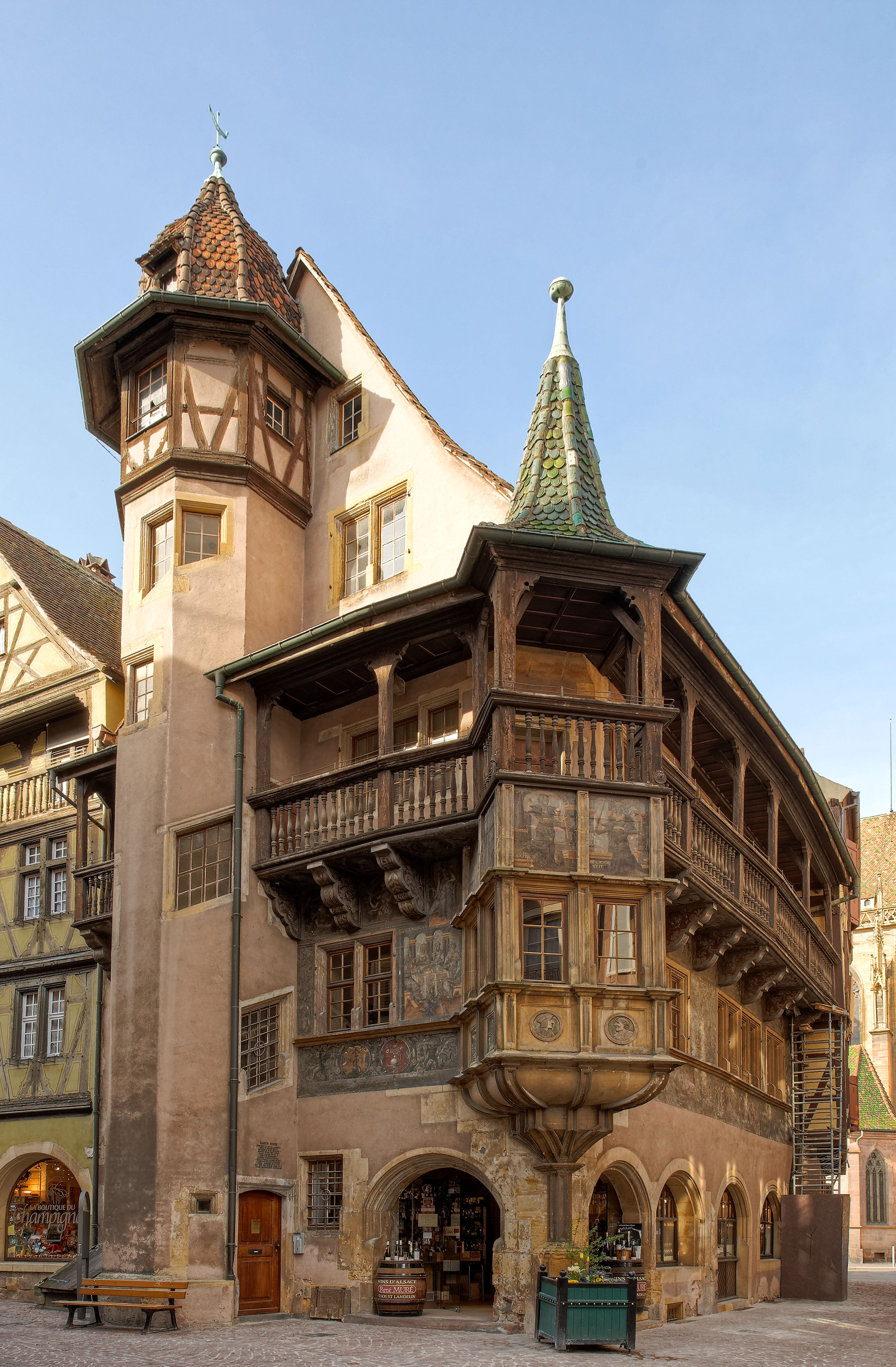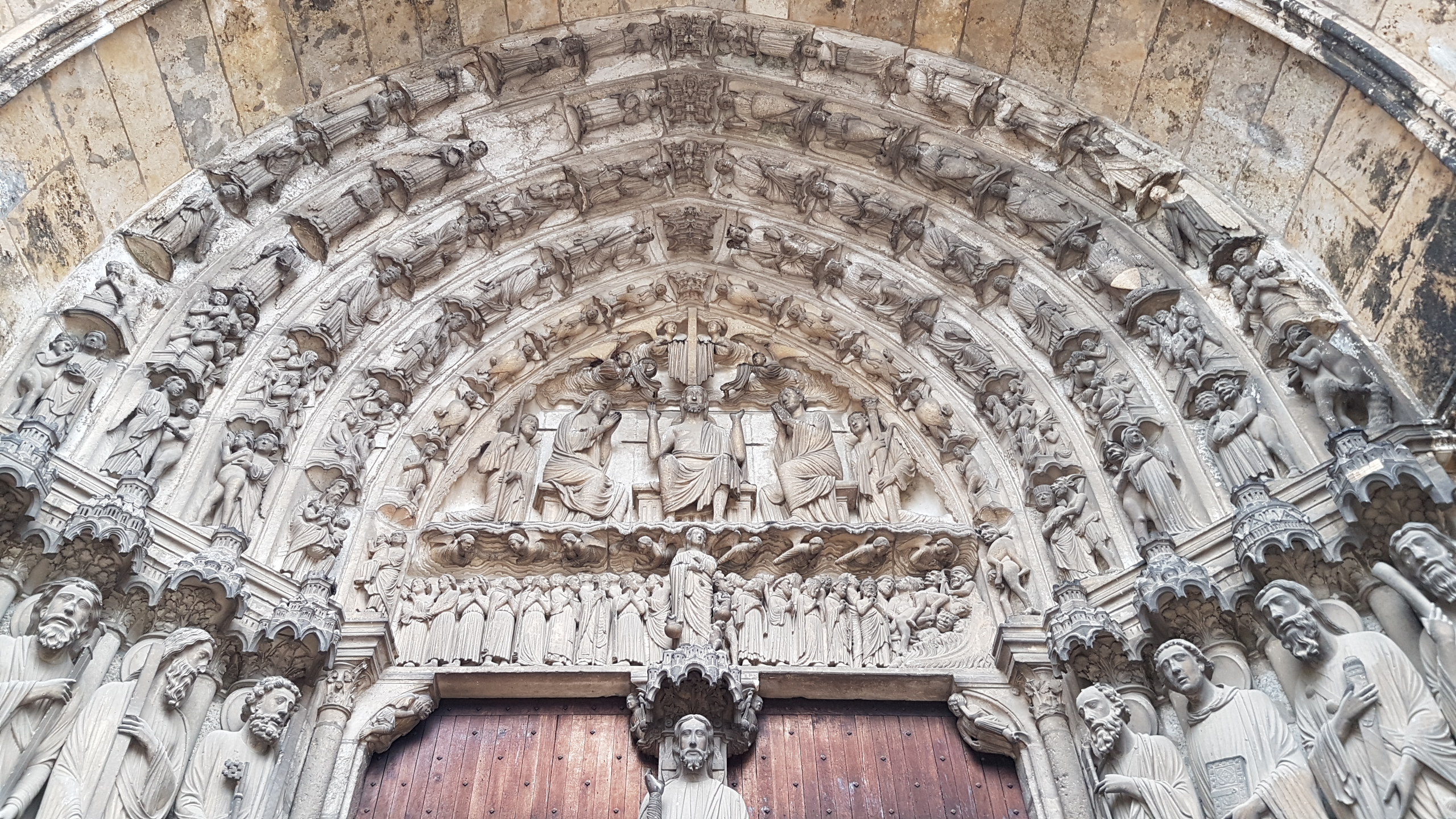|
Collégiale Saint-Thiébaut, Thann
The Collégiale Saint-Thiébaut (Saint-Theobald collegiate church) in Thann, Haut-Rhin is one of the most ornate Gothic churches in the whole Upper Rhenish region (Alsace, Baden, North-Western Switzerland, Palatinate).''HB Kunstführer Straßburg - Colmar - Elsaß'', 1986, Of its 76 meters high spire, it is said that "The spire of Strasbourg is the highest, the spire of Freiburg is the broadest but the spire of Thann is the prettiest."http://www.eugubininelmondo.com/fr/Thann.html In spite of its name, the church is actually dedicated to Saint-Ubald, of which it keeps a finger as a relic. It is listed as a ''Monument historique'' since 1841 by the French Ministry of Culture. The building The building was erected between 1332 (South lateral nave) and 1516 (achievement of the tower by master Rémy (or Remigius) Faesch from Basel). [...More Info...] [...Related Items...] OR: [Wikipedia] [Google] [Baidu] |
Thann, Haut-Rhin
Thann (; Alsatian language, Alsatian: ''Dànn'', , ) is a Communes of France, commune in the northeastern French Departments of France, department of Haut-Rhin, in Grand Est.Commune de Thann (68334) INSEE It is the ''Subprefectures in France, sous-préfecture'' of the arrondissement of Thann-Guebwiller and part of the canton of Cernay. Its inhabitants are known as ''Thannois''. Geography Thann is situated at the foot of the Vosges mountains, where the valley of the river Thur (France), Thur enters the Upper Rhine Plain. The Thur runs through the middle of the town.
[...More Info...] [...Related Items...] OR: [Wikipedia] [Google] [Baidu] |
Basel
Basel ( ; ), also known as Basle ( ), ; ; ; . is a city in northwestern Switzerland on the river Rhine (at the transition from the High Rhine, High to the Upper Rhine). Basel is Switzerland's List of cities in Switzerland, third-most-populous city (after Zurich and Geneva), with 177,595 inhabitants within the city municipality limits. The official language of Basel is Swiss Standard German and the main spoken language is the local Basel German dialect. Basel is commonly considered to be the cultural capital of Switzerland and the city is famous for its many Museums in Basel, museums, including the Kunstmuseum Basel, Kunstmuseum, which is the first collection of art accessible to the public in the world (1661) and the largest museum of Swiss art, art in Switzerland, the Fondation Beyeler (located in Riehen), the Museum Tinguely and the Museum of Contemporary Art (Basel), Museum of Contemporary Art, which is the first public museum of contemporary art in Europe. Forty museums ... [...More Info...] [...Related Items...] OR: [Wikipedia] [Google] [Baidu] |
Apostles In The New Testament
In Christian theology and ecclesiology, the apostles, particularly the Twelve Apostles (also known as the Twelve Disciples or simply the Twelve), were the primary Disciple (Christianity), disciples of Jesus according to the New Testament. During the Life of Jesus in the New Testament, life and ministry of Jesus in the Christianity in the 1st century, 1st century AD, the apostles were his closest followers and became the primary teachers of the gospel message of Jesus. There is also an Eastern Christianity, Eastern Christian tradition derived from the Gospel of Luke that there were Seventy disciples, seventy apostles during the time of Jesus' ministry. The commissioning of the Twelve Apostles during the ministry of Jesus is described in the Synoptic Gospels. After his Resurrection of Jesus, resurrection, Jesus sent eleven of them (as Judas Iscariot by then had Judas Iscariot#Death, died) by the Great Commission to spread his teachings to all nations. In the Pauline epistles, ... [...More Info...] [...Related Items...] OR: [Wikipedia] [Google] [Baidu] |
Stained Glass
Stained glass refers to coloured glass as a material or art and architectural works created from it. Although it is traditionally made in flat panels and used as windows, the creations of modern stained glass artists also include three-dimensional structures and sculpture. Modern vernacular usage has often extended the term "stained glass" to include domestic leadlight, lead light and ''objet d'art, objets d'art'' created from glasswork, for example in the famous lamps of Louis Comfort Tiffany. As a material ''stained glass'' is glass that has been coloured by adding Salt (chemistry), metallic salts during its manufacture. It may then be further decorated in various ways. The coloured glass may be crafted into a stained-glass window, say, in which small pieces of glass are arranged to form patterns or pictures, held together (traditionally) by strips of lead, called cames or calms, and supported by a rigid frame. Painted details and yellow-coloured Silver staining, silver stain ... [...More Info...] [...Related Items...] OR: [Wikipedia] [Google] [Baidu] |
Choir (architecture)
A choir, also sometimes called quire, is the area of a church or cathedral that provides seating for the clergy and church choir. It is in the western part of the chancel, between the nave and the sanctuary, which houses the altar and Church tabernacle. In larger medieval churches it contained choir-stalls, seating aligned with the side of the church, so at right-angles to the seating for the congregation in the nave. Smaller medieval churches may not have a choir in the architectural sense at all, and they are often lacking in churches built by all denominations after the Protestant Reformation, though the Gothic Revival revived them as a distinct feature. As an architectural term "choir" remains distinct from the actual location of any singing choir – these may be located in various places, and often sing from a choir-loft, often over the door at the liturgical western end. In modern churches, the choir may be located centrally behind the altar, or the pulpit. The place w ... [...More Info...] [...Related Items...] OR: [Wikipedia] [Google] [Baidu] |
Colmar
Colmar (; ; or ) is a city and commune in the Haut-Rhin department and Alsace region of north-eastern France. The third-largest commune in Alsace (after Strasbourg and Mulhouse), it is the seat of the prefecture of the Haut-Rhin department and of the subprefecture of the Colmar-Ribeauvillé arrondissement. The city is renowned for its well-preserved old town, its numerous architectural landmarks and its museums, among which is the Unterlinden Museum, which houses the '' Isenheim Altarpiece''. Colmar is located on the Alsatian Wine Route and considers itself to be the capital of Alsatian wine ('). History Colmar was first mentioned by Charlemagne in his chronicle about Saxon wars. This was the location where the Carolingian Emperor Charles the Fat held a diet in 884. Colmar was granted the status of a free imperial city by Emperor Frederick II in 1226. In 1354 it joined the Décapole city league.G. Köbler, ''Historisches Lexikon der deutschen Länder'', 7th editi ... [...More Info...] [...Related Items...] OR: [Wikipedia] [Google] [Baidu] |
Saint-Martin Church, Colmar
The Église Saint-Martin ('' St. Martin church'') is a Roman Catholic church located in Colmar, Haut-Rhin, France. It is in the principal Gothic architectural style. Because of its past as a collegiate church, is also known als ''Collégiale Saint-Martin'', and because of its large dimensions, as '' Cathédrale Saint-Martin'', although Colmar had never been the seat of a bishopric. History and description In 1972, remains were archaeologically dug out of a first church, built in Carolingian style around the year 1000. Foundations of a second church built on that spot, in Romanesque style, were found as well. The present building had been constructed between 1234 and 1365 as the church of a college devoted to the cult of Martin of Tours, and since defunct. The current, conspicuous helmet crowning the bell tower had been added in 1572 in Renaissance style after a fire. The church is surrounded by several portals of rather small dimensions, speaking relatively to the volume of the ... [...More Info...] [...Related Items...] OR: [Wikipedia] [Google] [Baidu] |
Tile
Tiles are usually thin, square or rectangular coverings manufactured from hard-wearing material such as ceramic, Rock (geology), stone, metal, baked clay, or even glass. They are generally fixed in place in an array to cover roofs, floors, walls, edges, or other objects such as tabletops. Alternatively, tile can sometimes refer to similar units made from lightweight materials such as perlite, wood, and mineral wool, typically used for wall and ceiling applications. In another sense, a tile is a construction tile or similar object, such as rectangular counters used in playing games (see tile-based game). The word is derived from the French Language, French word ''tuile'', which is, in turn, from the Latin Language, Latin word ''tegula'', meaning a roof tile composed of fired clay. Tiles are often used to form wall and floor coverings, and can range from simple square tiles to complex or mosaics. Tiles are most often made of pottery, ceramic, typically Ceramic glaze, glazed for ... [...More Info...] [...Related Items...] OR: [Wikipedia] [Google] [Baidu] |
Poor Man's Bible
The term ''Poor Man's Bible'' has come into use in the modern era to describe works of art within churches and cathedrals which either individually or collectively have been created to illustrate the teachings of the Bible for a largely illiterate population. These artworks may take the form of carvings, paintings, mosaics or stained-glass windows. In some churches a single artwork, such as a stained-glass window, has the role of ''Poor Man's Bible'', while in others, the entire church is decorated with a complex biblical narrative that unites in a single scheme.Walter P. SnyderAsk the Pastor: Poor Man's Bible(1999) Sources The ''Biblia pauperum'' The term ''Poor Man's Bible'' is not to be confused with the so-called ''Biblia pauperum'', which are biblical picture books, either in illuminated manuscript or woodblock printing, printed "block-book" form. The illuminated ''Biblia Pauperum'', despite the name given in the 1930s by German scholars, were much too expensive to have ... [...More Info...] [...Related Items...] OR: [Wikipedia] [Google] [Baidu] |
Adoration Of The Magi
The Adoration of the Magi or Adoration of the Kings or Visitation of the Wise Men is the name traditionally given to the subject in the Nativity of Jesus in art in which the three Magi, represented as kings, especially in the West, having found Jesus by following a star, lay before him gifts of gold, frankincense, and myrrh, and worship him. It is related in the Bible by Matthew 2:11: "On entering the house, they saw the child with Mary his mother; and they knelt down and paid him homage. Then, opening their treasure chests, they offered him gifts of gold, frankincense, and myrrh. And having been warned in a dream not to return to Herod, they left for their own country by another path". Christian iconography considerably expanded the bare account of the Biblical Magi described in the Gospel of Matthew ( 2:1– 22). By the later Middle Ages this drew from non-canonical sources like the Golden Legend by Jacobus de Voragine. Artists used the expanded Christian iconography to ... [...More Info...] [...Related Items...] OR: [Wikipedia] [Google] [Baidu] |
Crucifixion Of Jesus
The crucifixion of Jesus was the death of Jesus by being crucifixion, nailed to a cross.The instrument of Jesus' crucifixion, instrument of crucifixion is taken to be an upright wooden beam to which was added a transverse wooden beam, thus forming a "cruciform" or T-shaped structure. It occurred in 1st-century Roman Judaea, Judaea, most likely in AD 30 or AD 33. The event is described in the four canonical gospels, referred to in the New Testament epistles, and later attested to by #Other accounts and references, other ancient sources. Scholars nearly universally accept the Historicity of Jesus, historicity of Jesus's crucifixion, although there is no consensus on the details.Christopher M. Tuckett in ''The Cambridge companion to Jesus'' edited by Markus N. A. Bockmuehl 2001 Cambridge Univ Press pp. 123–124 According to the canonical gospels, Jesus was Arrest of Jesus, arrested and Sanhedrin trial of Jesus, tried by the Sanhedrin, and then Pilate's court, sentenced by ... [...More Info...] [...Related Items...] OR: [Wikipedia] [Google] [Baidu] |
Archivolt
An archivolt (or voussure) is an ornamental Molding (decorative), moulding or band following the curve on the underside of an arch. It is composed of bands of ornamental mouldings (or other architectural elements) surrounding an arched opening, corresponding to the architrave in the case of a rectangular opening. The word is sometimes used to refer to the under-side or inner curve of the arch itself (more properly, the ''intrados''). Most commonly archivolts are found as a feature of the arches of church Portal (architecture), portals. The mouldings and sculptures on these archivolts are used to convey a Theology, theological story or depict religious figures and ideologies of the church in order to represent the gateway between the Sacredness, holy space of the church and the external world. The presence of archivolts on churches is seen throughout history, although their design, both architecturally and artistically, is heavily influenced by the period they were built in and th ... [...More Info...] [...Related Items...] OR: [Wikipedia] [Google] [Baidu] |







